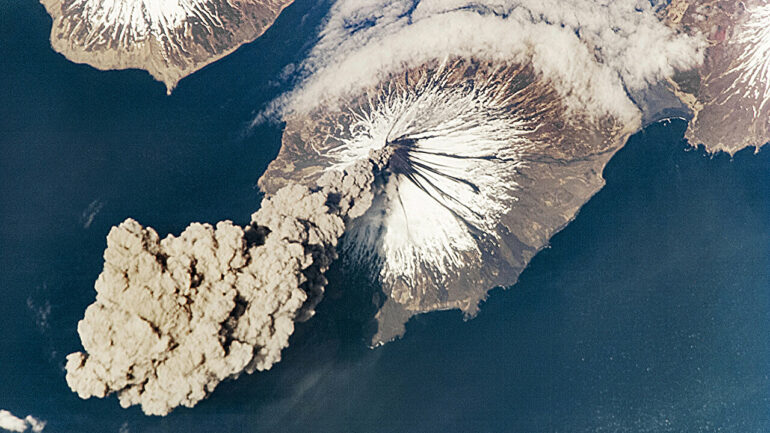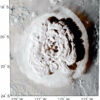Because of interactions with Earth’s hot mantle, water-logged oceanic plates release water as they slide beneath less dense overriding plates in subduction zones. This water rises and hydrates the mantle above it, contributing to the formation of volcanoes at the surface and limiting the maximum depths of damaging earthquakes.
However, the heating that drives water from the descending slab fluctuates over the life cycle of the subduction zone, and the amount of water released changes along with these fluctuations.
In an article published in AGU Advances, G. S. Epstein and colleagues investigated how this varying rate of water release affects mantle hydration. Specifically, they simulated the subduction of a 90-million-year-old plate beneath a 10-million-year-old plate and modeled water stored in the fore-arc mantle wedge—the wedge-shaped section of mantle that lies below the overriding plate but above the subducting slab.
To infer hydration of the mantle wedge, the researchers observed changes in geophysical properties (e.g., gravity anomalies and seismic velocities) indicating the formation of serpentine-group minerals, the most abundant water-bearing minerals in the mantle wedge by volume.
They found that levels of mantle hydration in their model were closely linked to the thermal evolution of the subduction zone. In the early phases of subduction, the descending slab dehydrated, but temperatures in the mantle wedge were too high to stabilize hydrous minerals; fluids released by the slab most likely passed vertically through the wedge, where they contributed to melting and the production of volcanic rocks. During mature subduction, the plate descended beyond the depths of the fore-arc wedge, and its released water no longer hydrated the mantle.
That left subduction’s middle stage, when the slab was sinking quickly through the upper mantle, as the sweet spot for mantle hydration. In this phase, the top of the slab was still hot while the fore-arc wedge was cooling, causing water to rise into the fore-arc wedge.
The findings align with current seismic observations and offer new insights into the movement of water through subduction zones and how this water participates in cycling among the subsurface, ocean, and atmosphere, the authors suggest. Notably, the simulations also revealed that collectively, Earth’s fore-arc mantle wedges hold about 10 times more water than previously estimated, roughly equal to 0.4% of the amount in Earth’s oceans.
More information:
G. S. Epstein et al, Evolving Subduction Zone Thermal Structure Drives Extensive Forearc Mantle Wedge Hydration, AGU Advances (2024). DOI: 10.1029/2023AV001121
This story is republished courtesy of Eos, hosted by the American Geophysical Union. Read the original story here.
Citation:
How mantle hydration changes over the lifetime of a subduction zone (2024, July 19)



